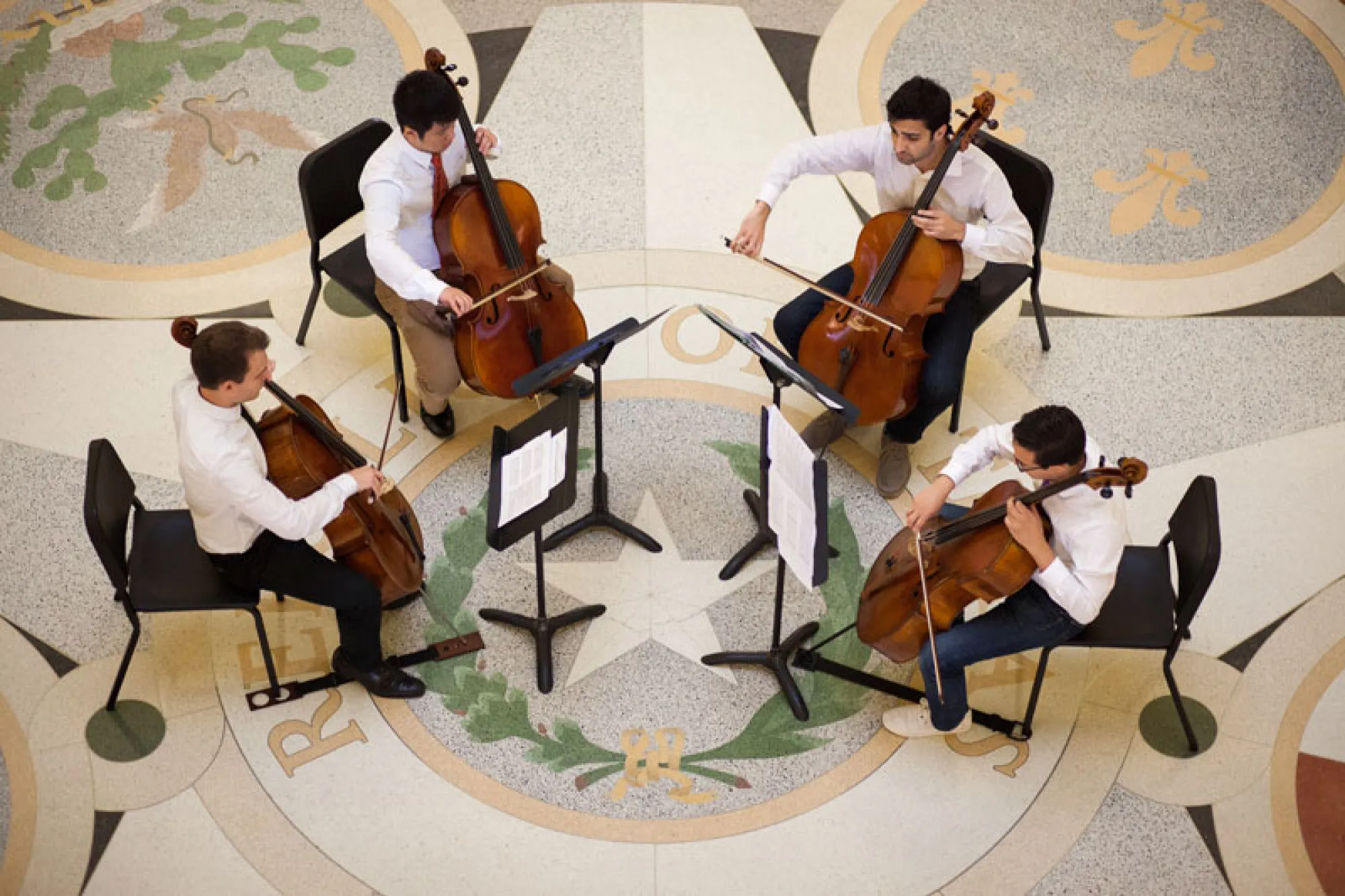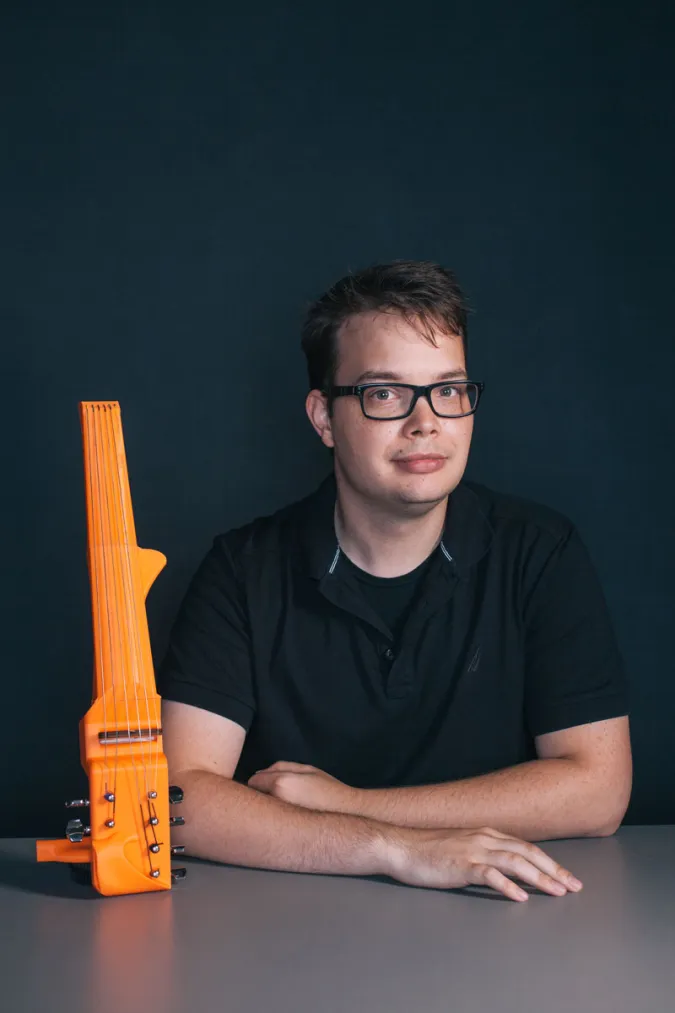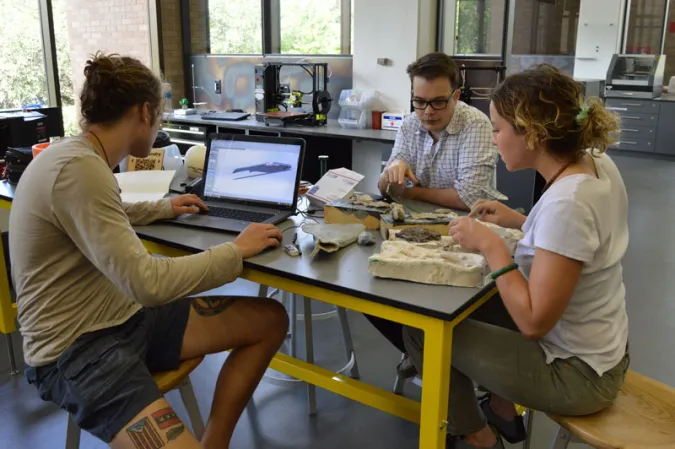Make it new: Music innovation grants spark collaboration and inspiration for musicians and scholars

As a violinist, Sean Riley loves to discover contemporary music that draws new crowds to the classical art of music. The doctoral candidate believes in building a relationship between the performers and audience through music that is appealing to both parties.
“My late grandfather used to tell a story that a famous violinist came to his hometown in Tennessee and performed a contemporary piece that the audience didn’t understand and didn’t like,” Riley said. “She was shocked that she didn’t get any applause after her performance. To my grandfather’s great despair, the performer told them it was obvious they needed to hear it again and proceeded to play it once more.”
This search led him to The Dharma at Big Sur by John Adams, a living American composer.
“The Dharma at Big Sur struck me as a musical depiction of the grandeur and expanse of American nature and architecture inspired by it,” he said.

But there was a catch in performing this particular composition—it requires a six-string electric violin. Riley’s 240-year-old Italian instrument may be beautiful, but it just wouldn't cut it for this piece of music. So Riley conceived a project to 3-D print his own electric violin, and thanks to funding from a new American music innovation grant, Riley’s dream to play The Dharma at Big Sur is becoming a reality.
In early January, the Butler School of Music unveiled the Rainwater Fund for American Music, a newly established $5 million endowment created by the late UT alumnus Richard E. Rainwater (B.A., Mathematics, 1966), a Fort Worth investor and fund adviser. The ambition of Rainwater’s fund is to advance the study of music produced by Americans—from roots to jazz to film music to the concert hall—at The University of Texas at Austin. A portion of the endowment was set aside to fund competitive grants for students pursuing innovative projects related to American music.
“I am grateful that we have this opportunity to provide these grants to our students,” said John Fremgen, associate professor of Jazz at the Butler School of Music and member of the grant selection committee. “I was honestly amazed at the scope of the submissions.”
Seven recipients were announced in March with funding offered at $5,000 and $2,500 for projects ranging from Riley’s electric violin to research on traditional Oaxacan music to multi-discipline concerts held in public spaces.
“Sean’s was the one proposal in which a tangible object was the outcome—which was unique,” Fremgen said, describing it as the perfect old-meets-new form of ingenuity. “Rather than a research proposal or an innovative performance proposal, of which there were many interesting ones, Sean’s stood out as unique in that respect. His desire to work with students in other areas to build the instrument was also a plus.”
To complete his project, Riley enlisted Rebecca Milton, an undergraduate student in studio art, and Daniel Goodwin, a recent graduate in mechanical engineering, to help create the violin. This fall he plans to host a joint concert and art installation where he will perform the piece and Milton will showcase art inspired by the music and violin.

“With the right people, generative communication patterns and an excellent idea, a project can succeed in its original purpose and find ways to go far beyond it,” Riley said. After enlisting Milton to transform the 3-D printed instrument into a work of art in its own right, Riley could see his original idea morphing beyond what he first imagined.
Another project set to take place this fall is from Kevin Parme, a Ph.D. student in ethnomusicology. He hopes to promote interest in traditional Oaxacan music, and, by extension, Mexican culture, with a three-part initiative. It involves dissertation research on brass and wind band music in Oaxaca and a bi-national collaboration with CIESAS (the national center for anthropological studies in Mexico), as well as bringing specialist Dr. Sergio Navarrete Pellicer to campus for a presentation of Oaxacan music and dance.
Both student ensembles Prismatx and Austin Camerata used their funding to host multi-disciplinary concerts last spring. Prismatx incorporated art from Rachel Stuckey (M.F.A., Studio Art, 2016), while Austin Camerata collaborated with dance students and faculty from the Department of Theatre and Dance and a creative writing graduate student from the Michener Center for Writers. They held free concerts in a children’s hospital, a brewery and the Capitol building rotunda.
“Our No. 1 goal is to make chamber music more exciting, more accessible and more integrated into the community,” said Daniel Kopp, co-founder on the Camerata project. “We want to find a way to get people in the door and then surprise them.”
Next spring, the Rainwater Grant committee will meet again to select the next round of students with ideas of innovation and creativity.
“Like all art, music must maintain a collaboration between the old and the new,” Fremgen said. “Whether in performance, composition or research, without forward-thinking artists and scholars constantly pushing boundaries and offering fresh perspectives, creativity is lost.”
Photo credits: Top: Austin Camerata hosts a performance at the Texas Capitol building’s rotunda in May. Middle: Sean Riley with the second draft of his 3-D printed electric violin. Photos by Lawrence Peart. Bottom: Daniel Goodwin, Sean Riley and Rebecca Milton work on 3-D printing a violin in The Foundry in the Fine Arts Library. Photo by Rose L. Thayer.

